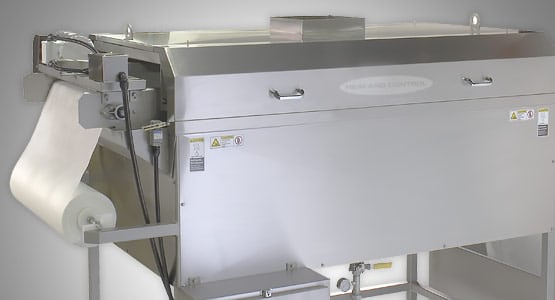Growth of Textile Recycling Promises to Divert More Material from Landfills
What Is Textile Recycling?
Textile recycling is the process by which old clothing and other textiles are recovered for reuse or material recovery. It is the basis for the textile recycling industry. In the United States, this group is represented by SMART, the Association of Wiping Materials, Used Clothing and Fiber Industries. The necessary steps in the textile recycling process involve the donation, collection, sorting and processing of textiles, and then subsequent transportation to end users of used garments, rags or other recovered materials.
The basis for the growing textile recycling industry is, of course, the textile industry itself. The textile industry has evolved into a $1 trillion industry globally, comprising clothing, as well as furniture and mattress material, linens, draperies, cleaning materials, leisure equipment, and many other items.
The Urgency to Recycle Textiles
The importance of recycling textiles is increasingly being recognized. Over 80 billion garments are produced annually, worldwide. According to U.S. EPA, around 16 million tons of textile municipal solid waste (MSW) was generated in 2015, about 6.1% of total MSW generation. The rate for textiles derived from clothing and footwear was 14.2%, while the recovery for sheets and pillowcases was 16.3% for the same year. As such, textile recycling is a significant challenge to be addressed as we strive to move closer to a zero landfill society.
Once in landfills, natural fibers can take hundreds of years to decompose. They may release methane and CO2 gas into the atmosphere. Additionally, synthetic textiles are designed not to decompose. In the landfill, they may release toxic substances into groundwater and surrounding soil.
Textile recycling offers the following environmental benefits:
- Decreases landfill space requirements, bearing in mind that synthetic fiber products do not decompose and that natural fibers may release greenhouse gasses
- Avoided use of virgin fibers
- Reduced consumption of energy and water
- Pollution avoidance
- Lessened demand for dyes.
Sources of Textiles for Recycling
Textiles for recycling are generated from two primary sources. These sources include:
1. Post-consumer, including garments, vehicle upholstery, household items and others.
2. Pre-consumer, including scrap created as a by-product from yarn and fabric manufacture, as well as the post-industrial scrap textiles from other industries.
The donation of old garments is supported by non-profit as well as many corporate programs, including those of Nike and Patagonia.
Wearable and Reused Textiles
According to a U.K. industry source, about 50% of collected textiles are reused, and about 50% are recycled. About 61 percent of recovered wearable clothes are exported to other countries. In some African countries, as many as 80% of people wear used clothing. The issue of sending used clothing to Africa has generated some degree of controversy as to the benefits of such initiatives, where it can have an adverse impact on local textile industries, native dress, and local waste generation.
In Canada, an estimated 10% of charitable contributions are sold by thrift stores, with another 90% of donated fabrics going to textile recyclers. Approximately 35% of donated clothing is made into industrial rags.
The Recycling Process
For the basics of recycling, read my article, How Clothing Recycling Works. For textiles to be recycled, there are fundamental differences between natural and synthetic fibers. For natural textiles:
- The incoming unwearable material is sorted by type of material and color. Color sorting results in a fabric that does not need to be re-dyed. The color sorting means no re-dying is required, saving energy and avoiding pollutants.
- Textiles are then pulled into fibers or shredded, sometimes introducing other fibers into the yarn. Materials are shredded or pulled into fibers. Depending on the end use of the yarn, other fibers may be incorporated.
- The yarn is then cleaned and mixed through a carding process
- Then the yarn is re-spun and ready for subsequent use in weaving or knitting.
- Some fibers are not spun into yards, however. Some are compressed for textile filling such as in mattresses.
In the case of polyester-based textiles, garments are shredded and then granulated for processing into polyester chips. These are subsequently melted and used to create new fibers for use in new polyester fabrics.
Beyond Recycling, Shop Sustainably
As society becomes more familiar with the hazards associated with sending old textiles to the landfill, and as new recycling technologies develop, it can be anticipated that the textile recycling industry will continue to grow. At the same time, watch for trends such as slow fashion to draw continued attention to the interplay of clothing and sustainability. The fast fashion industry generates considerable pollution and a sizeable negative impact on climate change. Consumers can help affect change by choosing clothing brands that last longer and which demonstrate a commitment to reducing their climate change impact.









